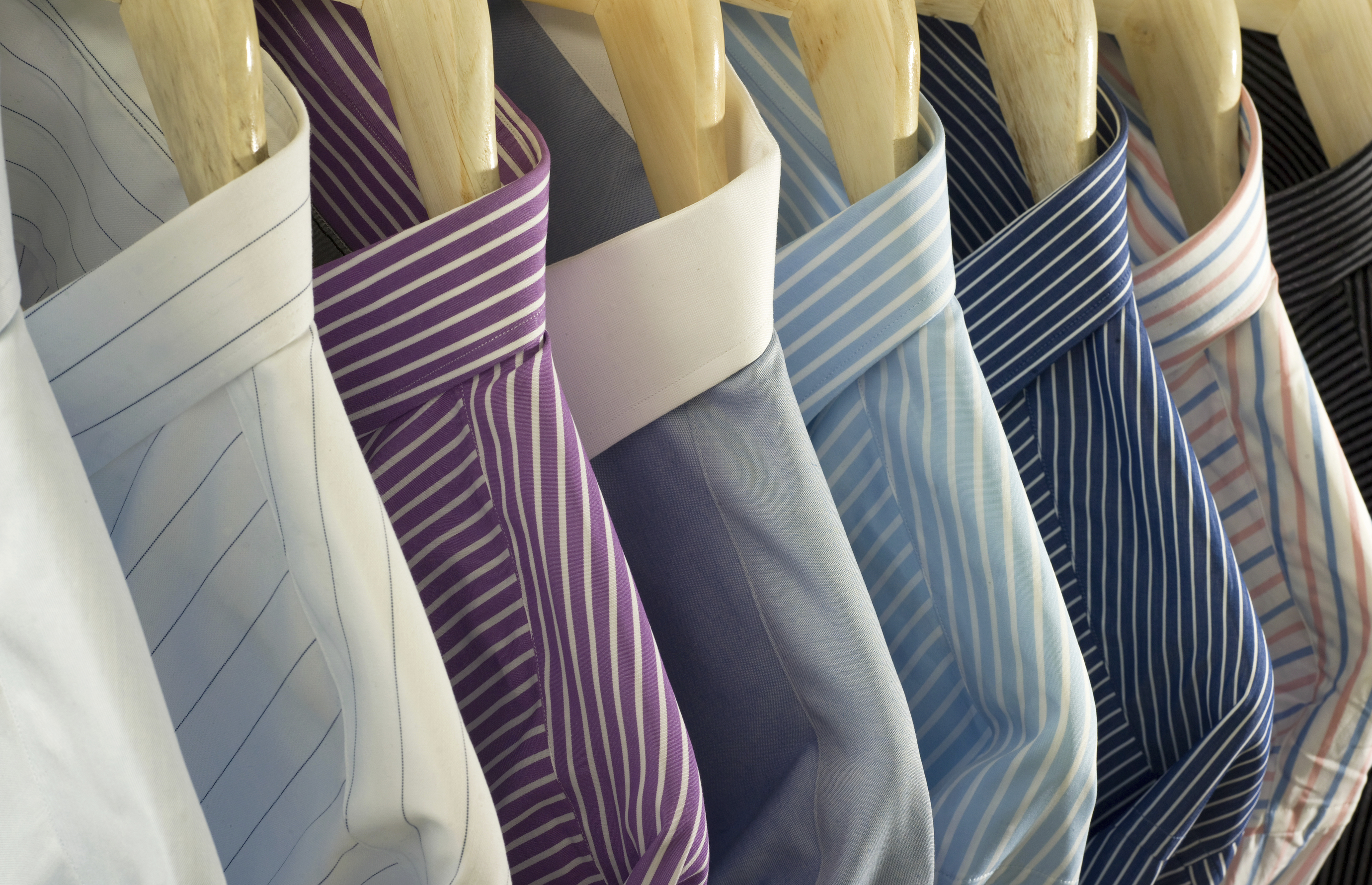Patterns
Solids: Once upon a time, professionals wore white shirts while manual workers wore colored shirts (presumably because the dirt that stained it wouldn’t be quite so obvious). We still tend to divide the masses into “white collar” criminals and “blue collar” workers, even though there isn’t much of a distinction today. While the classic white shirt still has its place, recently checks and stripes have become fairly standard for the sartorially inclined.
Stripes: Never mind the Beatles and The Rolling Stones, the bold stripes of London’s Jermyn Street brand represent the British Invasion that’s still going strong. If you want to go “authentic,” take a walk over or go online to Turnbull & Asser. If you’re simply looking to capture the spirit of the candy stripe, drop in to Charles Tyrwhitt or Thomas Pink.
Prince of Wales Check: Glen plaid or Glenurquhart check is a woolen fabric with a woven twill design of small and large checks. The name is taken from the valley of Glenurquhart in Iverness-shire, Scotland. This pattern is nicknamed the “Prince of Wales Check,” as it was popularized by the Duke of Windsor when he was the Prince of Wales in the 1920s and 1930s.

Collars
Turn-Down Collar: In its “forward point” or “straight collar” version, you have the standard collar for business — but it’s also appropriate for other occasions. The slings and arrows of outrageous fashion have led, at one time or another, to short and wide or long and slim collars having their moment in the spotlight, but stick with the basics and you’ll always be well-dressed.
English Spread Collar: There are a variety of spread collars, but stick with the medium spread. It works well for business and casual settings. Ralph Lauren, among many other brands, offers a full English spread in the form of its Keaton collar. While it does make a statement, be wary – there is something inherently untrustworthy about a collar made to be worn with a Windsor knot; which is, after all, named for a sartorial icon who rarely strayed very far from the “four in hand” knot. Do with that knowledge what you will . . .
Button-Down Collar: Here, the collar points are held down by a button on the shirt. In keeping with its supposed origins, this shirt remains a casual staple. While it has been said that the button-down collar originated with British polo players who wanted to keep their collars “down” while riding, it seems more likely that the button-down was created by Brooks Brothers in response to an Ivy League fad of the 1920s.
